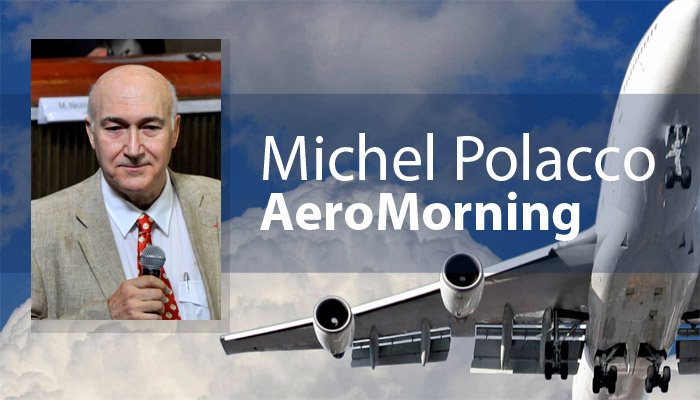The year 2024 began for air transport with a disaster and a miracle. In Tokyo Haneda, a Japan Airlines Airbus A350 landed at night and collided with a Dash-8 Q300 of the Japanese Coast-Guards. 5 of the six occupants died in the small turboprop. No casualties among the 379 occupants of the large Airbus, which was however completely destroyed by fire within a few hours. First analysis: either the controllers failed, or the pilots of one of the planes failed. We soon learned that the captain of the Dash, the only survivor, had misinterpreted the controllers’ instructions: “JA722A Good evening N°1 cab to holding point C5”. So authorization to drive to holding point C5. No enter, line up, take off. Of course, since the JAL A350 had just been cleared for approach to runway 34R, then cleared to land on runway 34R with a wind speed of 310/8 kts. In the cockpit of the A350, you can imagine the crew concentrating on their approach, with a hubbub* of airport lights in front of them, 50 seconds before touchdown, and the runway brightly lit and visible amidst all the lights. They didn’t notice the Dash, which had mistakenly lined up for the first third of the runway without authorization. Its lights (did it have strobes/flashings?) blend into the airport fog. In fact, the aircraft only camouflages two or three of the lights on the axial lighting system, which is hardly noticeable.
In the Dash, the captain seems to have made a representation error. As he exited the aircraft, injured, he would say that he had been cleared to line up. From this ramp, he had his back to the approach axis and could not see the aircraft on final. Nor, it seems, did he “copy” the landing clearance given to the jumbo jet. Nor did his co-pilot, perhaps, we don’t know, before listening to the cockpit conversations. No reason to doubt his good faith. But these mistakes are expensive!
What’s more, the controllers didn’t perceive the Dash’s lights in the “luminous hubbub” as it passed the stopping point. What’s more, the Stop Bar light barriers were not working that evening. As indicated on the published Notam. Another safety factor lost. We can always blame the pilot for exceeding his clearance, and the Airbus controllers and pilots for failing to see the lights of the Dash, which was seriously incursing the runway. But that doesn’t and won’t solve anything. Yes, vigilance and discipline are required. But human error and confusion cannot be 100% eradicated.
How many disasters have there been since the beginnings of air transport: dozens (81 cases out of Safety aviation recorded). With varying degrees of casualties. A tragic record: Tenerife in March 1977, with 583 dead. Two B747s collided, packed with passengers. Mistaken phraseology, fog. It was the worst disaster in aviation history. In Milan in 2011, an MD83 collided with a small Business Jet, killing 118 people. Madrid in 1983, a B727 versus a DC9; 93 dead. The last fatal collision in France took place in 2000 at Charles de Gaulle, between an Air Liberté MD83 on take-off and a British Short which, as in Tokyo, had moved forward, but this time due to a controller’s positional confusion. One of the two pilots was killed by the wing of the Douglas, which had stopped its takeoff. In 1982, in Omsk, Russia, plane versus snowplough: 178 dead. In this category, the Falcon 50 of Total’s long-standing CEO, Christophe de Margerie, also collided with a snowplow in Moscow’s Vnukovo in 2014. He and his crew died. The agents on the ground were drunk! A well-known Russian evil! Etc.
Of course, each time, one of the actors can be blamed. Or several. But that doesn’t eradicate this risk, which is now considered to be one of the most serious, and which puts passengers at risk! Last December, the directors of a major European airline told me that runway incursion is at the top of the list of dangers and threats to safety. He’s not the only one. Nobody takes this lightly.
Every day there are one or more runway incursions around the world. Small or large airfields, small or large aircraft, (or small versus large, as in Bordeaux at the end of 2022). That’s hundreds a year. Generally without consequence. But the quest for safe aviation means we can no longer tolerate these latent risks. Read the numerous reports, accounts and analyses of these “events” on the websites of the various Bureaux d’Enquêtes et d’Analyses de Sécurité: BEA in France, but also EASA for Europe, ICAO for the whole world, the NTSB in the USA, etc. Not to mention the reports and studies carried out in other countries. Not to mention the reports and studies carried out by airlines and air traffic control services. It’s instructive and frightening. I can’t add them as links, because the company reports are “internal” or “confidential”. Sometimes those of air traffic control too. But with everything that’s available, there’s enough to convince you of the seriousness of the situation. The evil persists. Hundreds of times a year. One day it goes “bing” like Tokyo! And sometimes even worse.
Road markings and signs exist. They are very useful and effective. Particularly in broad daylight or in fine weather at night. But they are more aids than barriers, even if many prohibitions or indications are notified in this way.
Speed cameras have been installed here and there. A long time ago. Useful, but not always working. Inadequate. Lined with light networks, controlled either by the controllers or by automatic systems. Alerts on air traffic controllers’ radar screens, on pilots’ screens. Radar sources, ADS-B transponders, aircraft TCAS. Many tools have been developed, in addition to procedures. Oral procedures, well codified. Precise phraseology. Strict taxiing rules for ground vehicles and crews, and strict rules for controllers who have to accept runway crossings on certain aerodromes. Dangers of aligning runways from on-ramps to ease traffic flow. (Tokyo or CDG in 2000). In fact, since the accident at Charles de Gaulle in 2000, air traffic controllers (according to an ICNA friend) no longer use access ramps that are not 90° secant for runway crossings.
Nor very steep straps, for alignments. The most inclined straps are used to clear aircraft more easily. That’s all. This means that a vehicle moving ahead – on a clear day, of course – can see an aircraft approaching or taking off before engaging.
To sum up, there are a number of methods and devices available to prevent incursions and their consequences:
RWSL: a luminous system, independent of ATC, based on ground radars, mobile radar beacons and mobile radar transponders. Red lines light up, forbidding either take-off or taxiing, and of course runway penetration (RELs Runway Entrance Lights) and for take-off, THLs (Take-off Hold Lights).
STOP BARs (out of service in Tokyo on the day of the accident) are a much less sophisticated form of runway protection than RWSLs.
RIMCAS: Runway Incursion Management and Collision Avoidance System. This tool, which uses information from the AVISO system (a system for digitizing analog ground radar data), is designed to alert controllers to a risk of collision between two aircraft, or an aircraft and a vehicle, on runways and in rights-of-way.
TCAS: Installed on all public passenger transport aircraft, with varying qualities and proposals. TCAS can show or even signal the occurrence of an approach. On airfields, however, to avoid multiple alerts in areas with high aircraft density, audible alarms are inhibited.
ADS-B / SSR: Manufacturers are hoping for much more effective results from mobiles or devices using data from aircraft or vehicles equipped with ADS-B, (which adds to the radar transponder) and provides highly accurate information whose analysis can generate more effective alerts than current slides.
The fact remains that the eye of the controller, the eye of the pilot or the driver on the ground remains a major and essential tool. And his ear! Listen carefully to other people’s traffic! Likewise, it’s essential to respect precise, rigorous phraseology, if necessary “backed up by repetition” (and wait, Hold On…), in a future context less busy or stressed on the congested VHF radio waves of airports.
Michel Polacco
*At a major airport like Roissy Charles de Gaulle, 27,000 beacons are illuminated at night! Of which 1500 are dedicated exclusively to very bad weather situations.
Links :
-Safety note “Runway incursions” from the French BEA, (No. 8 of 2007) with several examples:
https://www.ecologie.gouv.fr/sites/default/files/ita_008.pdf
-Sur les petits aérodromes aussi :
https://bea.aero/fileadmin/documents/docspa/2007/f-qe070326/pdf/f-qe070326_05.pdf
-RWSL:
https://www.dailymotion.com/video/x5paonu
RIMCAS alert:
https://bea.aero/les-enquetes/evenements-notifies/detail/alarme-rimcas-incursion-sur-piste/
Michel Polacco’s column for AeroMorning
January 14, 2024











Be the first to comment on "Runway incursion: one of the major risks still facing the air transport industry!"